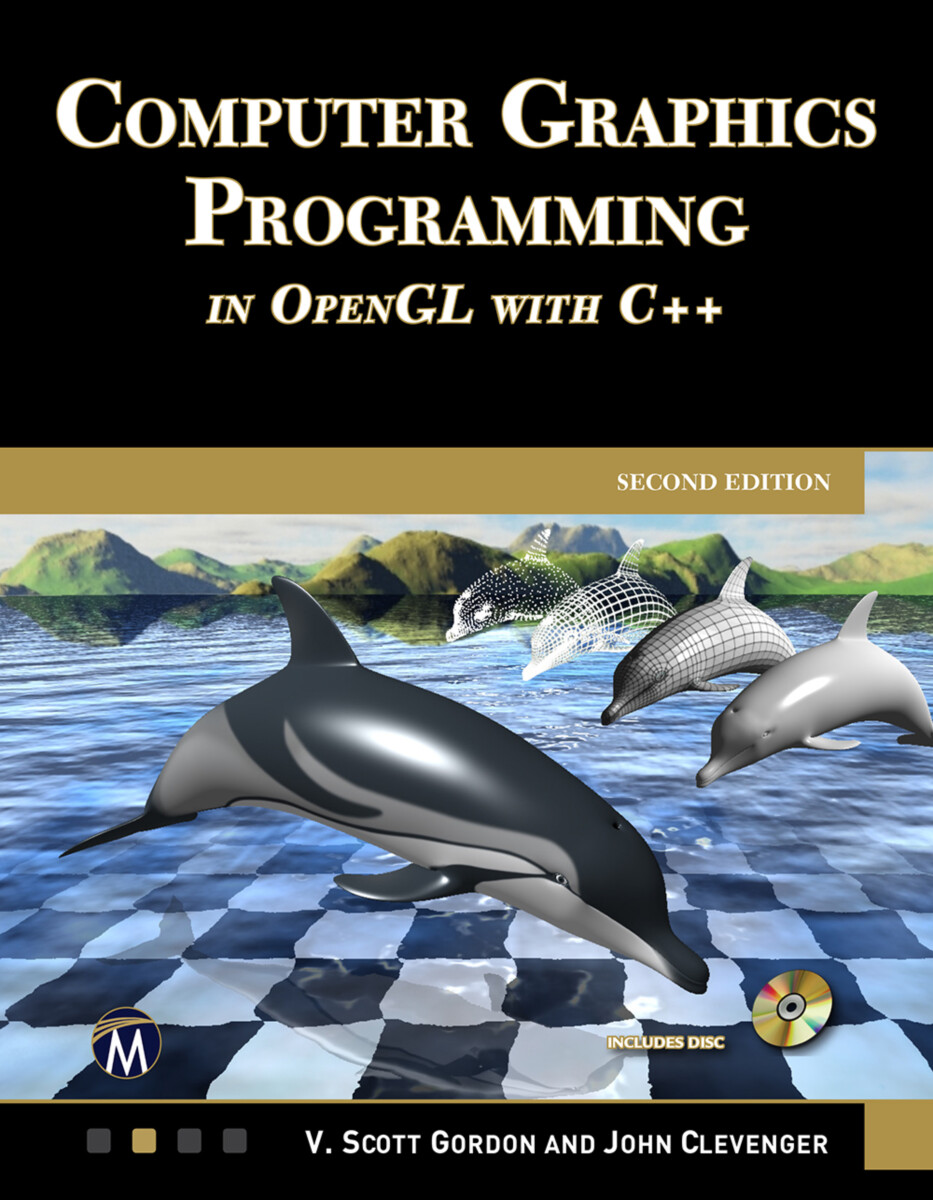Computer Graphics Programming in OpenGL with C++ Edition 2
- Publisher
Mercury Learning and Information - Published
19th January 2021 - ISBN 9781683926726
- Language English
- Pages 514 pp.
- Size 7" x 9"
- Request Exam Copy
E-books are now distributed via VitalSource
VitalSource offer a more seamless way to access the ebook, and add some great new features including text-to-voice. You own your ebook for life, it is simply hosted on the vendor website, working much like Kindle and Nook. Click here to see more detailed information on this process.
- Publisher
Mercury Learning and Information - Published
9th December 2020 - ISBN 9781683926702
- Language English
- Pages 514 pp.
- Size 7" x 9"
- Request E-Exam Copy
Library E-Books
We are signed up with aggregators who resell networkable e-book editions of our titles to academic libraries. These editions, priced at par with simultaneous hardcover editions of our titles, are not available direct from Stylus.
These aggregators offer a variety of plans to libraries, such as simultaneous access by multiple library patrons, and access to portions of titles at a fraction of list price under what is commonly referred to as a "patron-driven demand" model.
- Publisher
Mercury Learning and Information - Published
9th December 2020 - ISBN 9781683926719
- Language English
- Pages 514 pp.
- Size 7" x 9"
This new edition provides step-by-step instruction on modern 3D graphics shader programming in OpenGL with C++, along with its theoretical foundations. It is appropriate both for computer science graphics courses and for professionals interested in mastering 3D graphics skills. It has been designed in a 4-color, “teach-yourself” format with numerous examples that the reader can run just as presented. Every shader stage is explored, from the basics of modeling, textures, lighting, shadows, etc., through advanced techniques such as tessellation, normal mapping, noise maps, as well as new chapters on simulating water, stereoscopy, and ray tracing.
FEATURES:
- Covers modern OpenGL 4.0+ shader programming in C++, with instructions for both PC/Windows and Macintosh
- Adds new chapters on simulating water, stereoscopy, and ray tracing
- Includes companion files with code, object models, figures, and more (also available for downloading by writing to the publisher)
- Illustrates every technique with running code examples. Everything needed to install the libraries, and complete source code for each example
- Includes step-by-step instruction for using each GLSL programmable pipeline stage (vertex, tessellation, geometry, and fragment)
- Explores practical examples for modeling, lighting, and shadows (including soft shadows), terrain, water, and 3D materials such as wood and marble
- Explains how to optimize code for tools such as Nvidia’s Nsight debugger.
1: Getting Started
2: The OpenGL Graphics Pipeline
3: Mathematical Foundations
4: Managing 3D Graphics Data
5: Texture Mapping
6: 3D Models
7: Lighting
8: Shadows
9: Sky and Backgrounds
10: Enhancing Surface Detail
11: Parametric
Surfaces
12: Tessellation
13: Geometry Shaders
14: Other Techniques
15: Simulating Water
16: Ray Tracing
17: Stereoscopy
Appendix A: Installation and Setup for Windows (PC)
Appendix B: Installation and Setup for Macintosh
Appendix C: Using the Nsight Graphics Debugger
Index
Companion Files:
(also available for downloading by writing to the publisher at info@merclearning.com)
- The source code for every program in the book, organized by chapter
- The OBJ models used in the examples, and the various texture files
- Cubemaps and skydomes for generating environments
- Height maps and normal maps for achieving realistic detail
- High resolution copies of all of the book's figures
V. Scott Gordon, PhD
V. Scott Gordon is a computer science professor at California State University, Sacramento.
John L. Clevenger, PhD
John L. Clevenger is a computer science professor at California State University, Sacramento.


